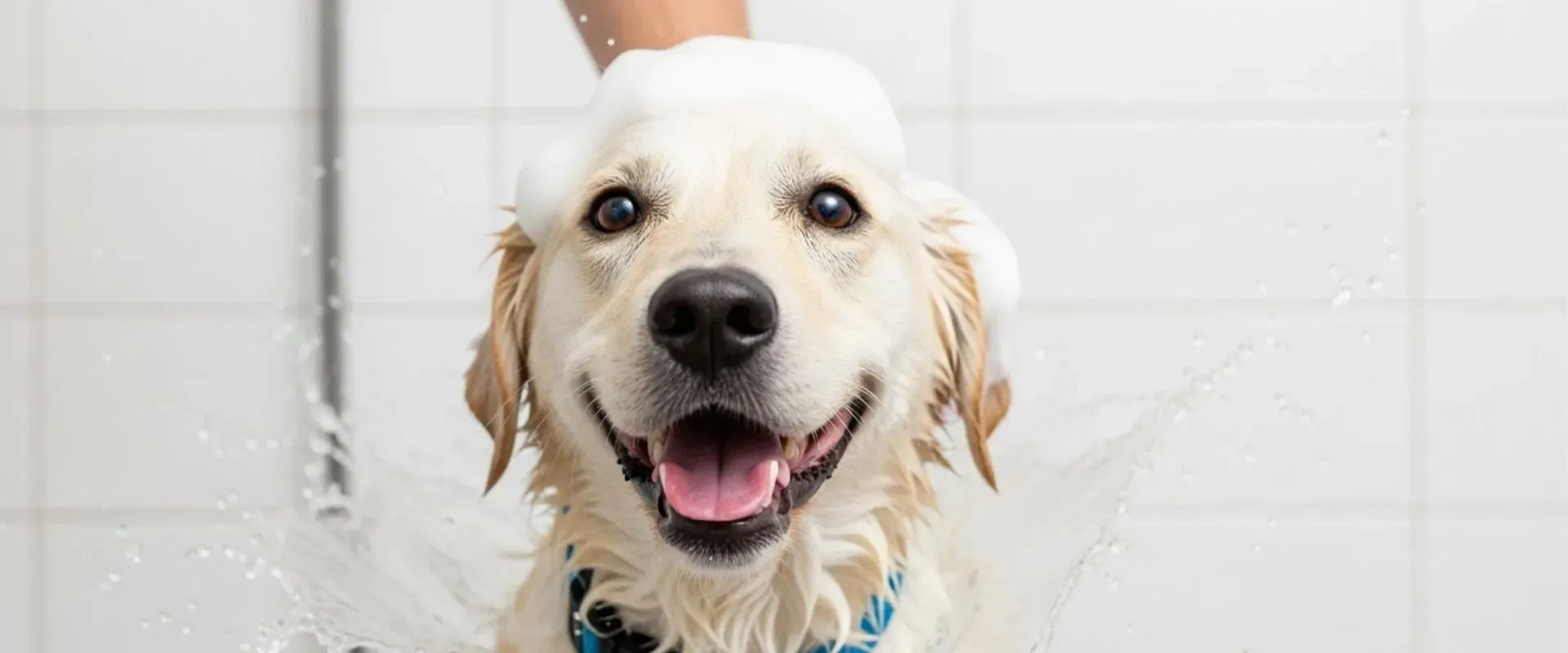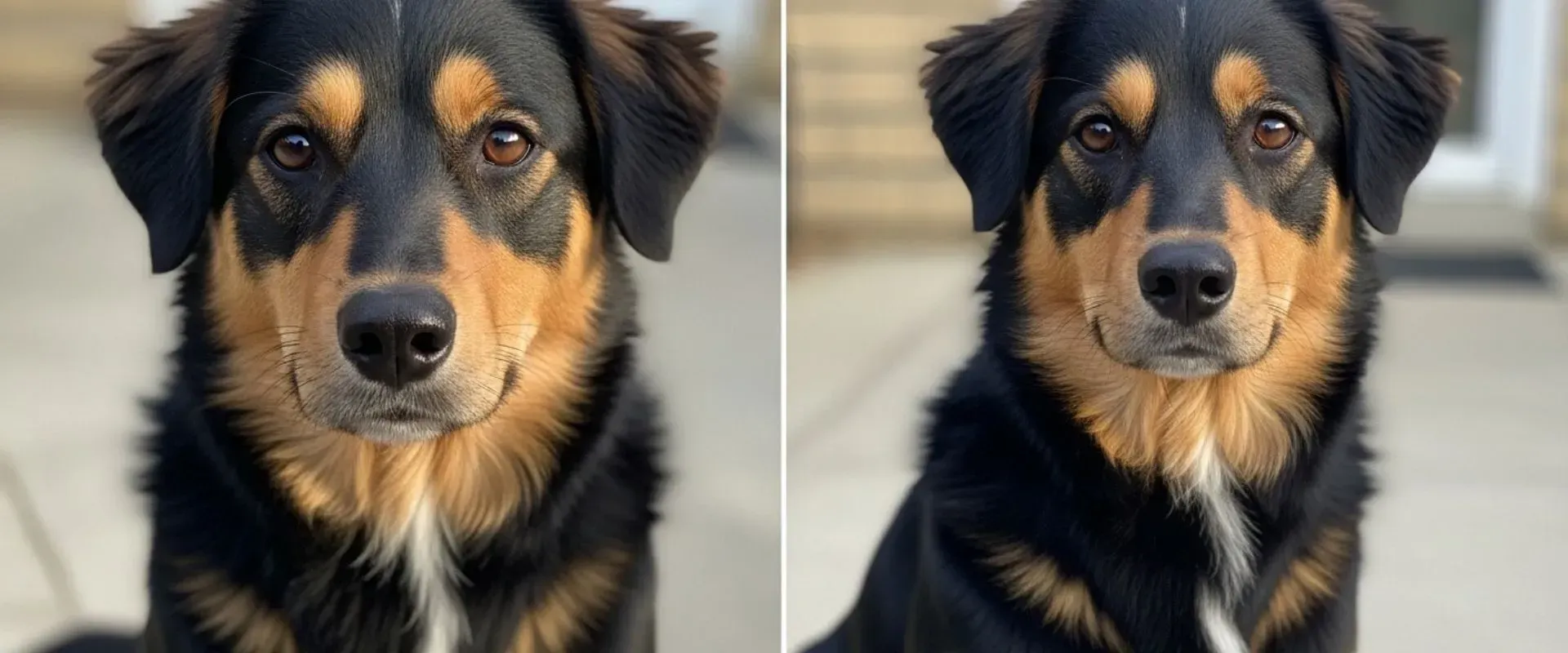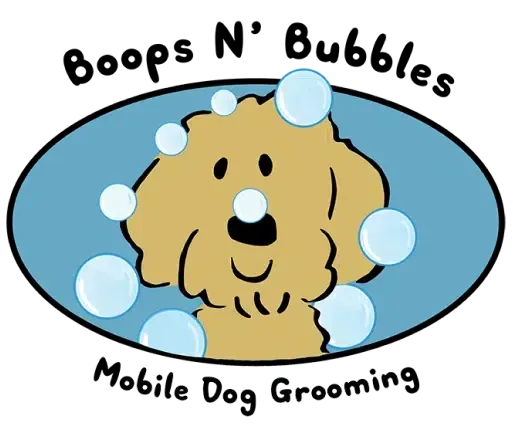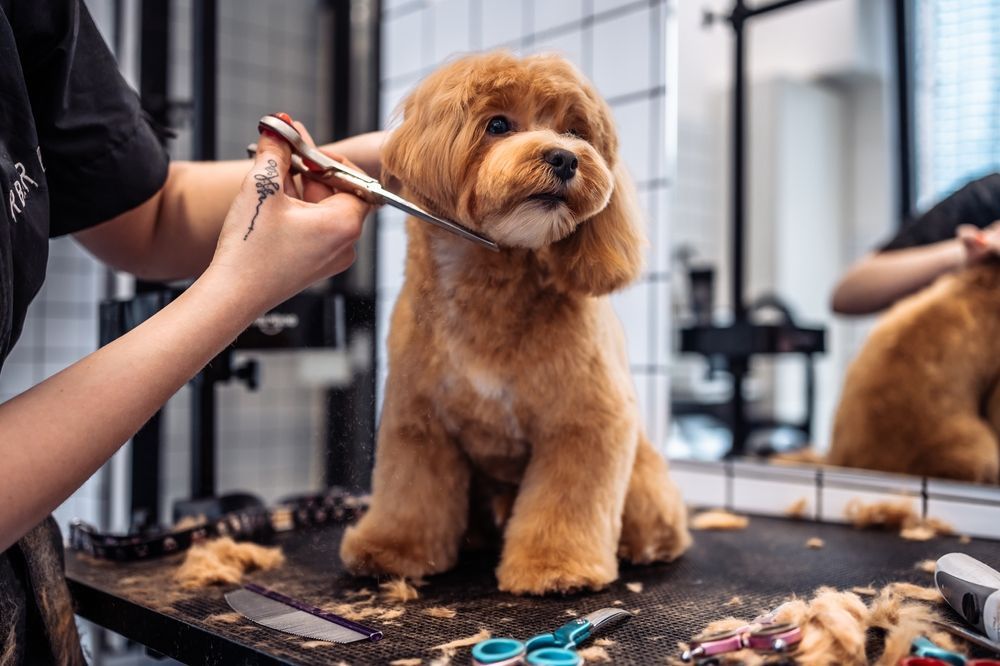How to Keep Your Dog's Coat Shiny and Healthy
A shiny, healthy coat isn't just about looks; it's a clear sign that your dog is happy and healthy from the inside out. Whether you have a Golden Retriever with a flowing double coat or a short-haired breed, maintaining that lustrous shine requires the right approach. At Boops N' Bubbles Mobile Dog Grooming, we see firsthand how proper coat care transforms not just how dogs look, but how they feel.
Your dog's coat serves as their first line of defense against the elements while regulating body temperature. When you know how to keep your dog’s coat shiny, you're not just improving their appearance; you're supporting their overall health and comfort. This guide will help you understand how to keep your dog’s coat shiny and maintain a healthy fur routine with simple dog coat care tips.
Understanding Your Dog's Coat Type
Every dog has unique coat characteristics that determine their specific grooming needs. Understanding these differences is essential for developing an effective dog coat care routine.
1. Single vs. Double Coats
Dogs with single coats, like Poodles and Maltese, have one layer of hair that grows continuously. These coats typically require regular trimming and consistent brushing to prevent matting.
Double-coated breeds, including Golden Retrievers and German Shepherds, have a soft undercoat beneath longer guard hairs. These dogs shed seasonally and need specialized care during these periods to maintain healthy dog fur.
2. Coat Texture Variations
Smooth coats require less maintenance but benefit from regular brushing to distribute natural oils. Wire-haired breeds need hand-stripping or professional grooming to maintain their texture. Curly and wavy coats require frequent brushing and professional styling to prevent matting and maintain their natural bounce.
Essential Daily Brushing Techniques
Regular brushing forms the foundation of any successful shiny dog coat tips routine.
The frequency and technique of brushing depend entirely on your dog's coat type and lifestyle.
1. Choosing the Right Brush
Slicker brushes work well for most coat types, removing loose hair and preventing tangles. Pin brushes are ideal for longer coats, while bristle brushes distribute oils effectively in short-haired breeds. Undercoat rakes are essential for double-coated dogs, especially during shedding seasons.
2. Proper Brushing Method
Start brushing from the head and work toward the tail, always brush in the direction of hair growth. Pay special attention to areas prone to matting, such as behind the ears, under the legs, and around the collar area. For long-coated dogs, work in sections to ensure you reach all layers of the coat.

Nutrition's Role in Coat Health
What your dog eats directly impacts how their coat looks and feels. A diet rich in essential nutrients provides the building blocks for healthy dog fur from the inside out.
1. Essential Fatty Acids
Omega-3 and omega-6 fatty acids are crucial for coat health. These nutrients help maintain skin moisture and promote a natural shine. Fish oil supplements or foods containing salmon, sardines, and flaxseed can boost your dog's intake of omega fatty acids.
2. Protein Requirements
Since hair is primarily made of protein, ensuring adequate protein intake is vital for coat health. High-quality animal proteins provide the amino acids necessary for strong, shiny hair growth.
3. Key Vitamins and Minerals
Vitamin E acts as an antioxidant, protecting skin and coat from damage. Zinc supports healthy skin and hair growth, while biotin strengthens hair shafts. A balanced diet typically provides these nutrients, but consult your veterinarian before adding supplements.

Bathing Best Practices for Coat Health
Regular bathing removes dirt, allergens, and excess oils while maintaining the coat's natural protective barrier. However, the frequency and method matter significantly for optimal results.
1. Bathing Frequency Guidelines
Most dogs benefit from bathing every 4-6 weeks, though this varies by breed and lifestyle. Dogs with oily coats may need weekly baths, while those with dry skin might only need monthly bathing. Active outdoor dogs typically require more frequent bathing than indoor companions.
Over-bathing strips natural oils from the coat, leading to dryness and irritation. Under-bathing allows dirt and oils to build up, potentially causing skin problems and dulling the coat's shine.
2. Selecting Quality Shampoos
Pick a shampoo designed specifically for dogs—these are formulated for their unique skin pH (unlike human products), helping prevent irritation and dryness.
Choose gentle, natural ingredients like oatmeal, aloe, or coconut oil, and avoid harsh additives such as sulfates, parabens, artificial fragrances, and dyes that can strip oils and irritate your pup’s skin.
3. Water Temperature and Technique
Use lukewarm water to avoid shocking your dog's system or damaging their coat. Wet the coat thoroughly before applying shampoo, then massage gently to create a rich lather. Rinse completely, as leftover soap residue can cause irritation and dullness.
Professional Grooming Benefits
While home care is essential, professional grooming provides expertise and services that enhance your dog's coat care routine significantly.
1. Expert Assessment and Care
Professional groomers can identify potential skin and coat issues early, recommending appropriate treatments or veterinary consultation when needed. They understand different coat types and can customize their approach accordingly.
2. Specialized Services
Professional groomers offer services like
de-shedding treatments, which remove loose undercoat more effectively than home brushing. They also provide nail trimming, ear cleaning, and anal gland expression—services that contribute to overall health and comfort.
3. Stress-Free Environment
Mobile grooming services provide one-on-one attention in a calm environment. This cage-free approach reduces stress while ensuring thorough, personalized care for your dog's specific needs.

Common Coat Problems and Solutions
Even with excellent care, dogs can experience coat issues that require attention and specific treatment approaches.
1. Dealing with Excessive Shedding
While shedding is natural, excessive hair loss may indicate underlying issues. Increase brushing frequency during shedding seasons, ensure proper nutrition, and consider professional de-shedding treatments. If shedding seems abnormal, consult your veterinarian.
2. Managing Dry, Flaky Skin
Dry skin often results from over-bathing, harsh shampoos, or environmental factors. Reduce bathing frequency, switch to moisturizing shampoos, and consider adding omega fatty acids to your dog's diet. A humidifier can help during dry winter months.
3.
Preventing and Treating Mats
Mats form when loose hair tangles with attached hair, creating tight knots. Prevent mats through regular brushing, paying attention to high-friction areas. For existing mats, work them out gently with detangling spray and appropriate tools. Severe matting may require professional attention.
Seasonal Coat Care Considerations
Your dog's coat needs to change throughout the year, requiring adjustments to your care routine for optimal health and appearance.
1. Spring and Summer Care
Warmer months may require more frequent bathing due to increased outdoor activity. Some dogs benefit from having shorter haircuts to stay cool; however, double-coated breeds should never be shaved completely. Instead, increase brushing frequency to manage seasonal shedding and maintain a healthy coat.
2. Fall and Winter Preparation
As temperatures drop, dogs may need less frequent bathing to preserve natural oils. Winter air can dry out skin and coat, so consider using moisturizing shampoos and possibly adding humidity to your home.
Creating Your Dog Coat Care Routine
Establishing a consistent routine ensures your dog's coat remains healthy and shiny year-round. Tailor your approach based on your dog's specific needs and lifestyle.
Start with daily brushing sessions, making them positive experiences through treats and praise. Schedule regular baths based on your dog's coat type and activity level. Monitor your dog's coat condition regularly, noting any changes that might require professional attention.
Consider professional grooming every 6–8 weeks for most dogs, though some breeds may require more frequent visits. Mobile grooming services offer convenience while providing expert care in a stress-free environment.
Transform Your Dog's Coat Today
Learning how to keep a dog coat shiny involves understanding your dog's unique needs and maintaining consistent care. With proper nutrition, regular brushing, appropriate bathing, and professional support when needed, you can help your dog maintain a beautiful, healthy coat that reflects their overall wellbeing.
Ready to give your dog the professional care they deserve?
Schedule an appointment with Boops N' Bubbles Mobile Dog Grooming for expert coat care that comes directly to your doorstep. Your dog's coat and comfort will thank you.
Frequently Asked Questions
How often should I brush my dog's coat?
Most dogs benefit from daily brushing, though short-haired breeds may only need brushing 2–3 times per week. Long-haired and double-coated breeds require daily attention to prevent matting and manage shedding.
Can I use human shampoo on my dog?
No, human shampoos have different pH levels that can irritate your dog's skin and strip natural oils from their coat. Always use shampoos specifically formulated for dogs.
What foods help improve a coat's shine naturally?
Foods rich in omega fatty acids, such as salmon, sardines, and flaxseed, promote coat health. High-quality proteins and foods containing vitamin E also support healthy hair growth and shine.
How do I know if my dog's shedding is normal?
Normal shedding varies by breed and season. Double-coated breeds shed heavily twice yearly, while single-coated breeds shed more consistently. Excessive shedding, bald patches, or skin irritation warrant veterinary consultation.
When should I seek professional grooming help?
Consider professional grooming if your dog has severe matting, excessive shedding, or skin issues, or if you're unsure about proper coat care techniques for your dog's breed.


